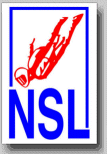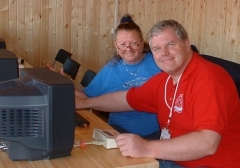
National
Skydiving
League
226 Pecan Street
Deland FL 32724
tel: (386) 801-0804
© 2003 - 2024
All Rights Reserved


226 Pecan Street
Deland FL 32724
tel: (386) 801-0804
© 2003 - 2024
All Rights Reserved

NSL News Coverage of the FAI Indoor World Cup 2024 |

Wellens confirmed that he saw two different infringements. He did not think that the "double-bust" rule could be applied in this case. However, he also mentioned that it surely was not easy to make the correct judging call for the situation, which can still be viewed on NSL-TV.
Wellens interpreted Perris Helion's situation with an incomplete Danish T to begin with. Then he added that the inter of Block 17 was never shown correctly. He offered two options for the infringement of the inter. The first one is the simple fact that the picture of the inter was never shown (open grips in the piece, single flyer).
The second option is the fact that the center of the 3-way compressed accordion picks up the left-hand grip during the inter. The rules say that helping grips within the pieces are not allowed:
| 3.3.7. Where subgroups are shown, they must remain intact as a subgroup with only the depicted grips. 3.3.8. Assisting handholds on other jumpers or their equipment within a subgroup or a scoring formation are not permitted. |
Wellens, apparently along with the judges in Perris, did not see or accept that the missing or missed grip in the Danish T was carried into the inter and caused the second infringement of the inter. He could possibly see a call in favor of the team only if a judge would accept a complete Danish T to begin with.
In this case, the Danish T would count as a scoring formation, and the infringement of the inter would only cause the deduction of the scoring point for the Murphy. In fact, there would be two different infringements of the inter: the missing correct picture of the inter and the "illegal helping grip" within the 3-way piece. However, two different infringements of the same inter would still only be looked at as a 1-point deduction, with the Murphy not counting as a scoring formation.

Judges obviously interpret the rules as they are written. There is no consideration or interpretation of the intentions that a competitor might have. The center of the 3-way compressed accordion tried hard to show the correct Danish T by chasing after the missing or missed left-hand grip. Unfortunately, the success of closing the grip had the opposite result since the judges might see this grip as an "illegal helping grip within the subgroup".
The same person then realized that the rest of the team had already moved forward in the block and tried to save the Murphy as a scoring formation by dropping both grips for the correct inter. Too late, the single flyer was already on the new grip of the Murphy, the damage was already done.

The missing or missed grip in the Danish T initiated the whole following action of the person in the center position of the 3-way compressed accordion. It must have been hard for the individual and the team to accept that the infringements of the inter were not a result of the missing or missed grip in the Danish T and then "carried into the inter".
However, fact is that the judges in Perris saw two separate infringements unrelated to each other, and the call has been confirmed by one of the most experienced international judges. The "double-bust" rule did not apply in the Perris Helion case, Danish T and Murphy both did not count as scoring formations.
| If an infringement in the scoring formation of a block sequence is carried into the inter, this will be considered as one infringement only, provided that the intent of the inter requirements for the next formation is clearly presented and no other infringement occurs in the inter. |
How can a team avoid such a situation? More than ever before, the new rules with reduced damage for an infringement encourage teams to move on if anything is in doubt. The person in the center position of the 3-way compressed accordion tried to make things right and clearly present the correct Danish T to the judges. The single flyer had already decided to move on, no matter whether the Danish T was complete or not. The center person could have moved on, as well, by dropping the grips and accepting the possibility of an incomplete Danish T. It would have saved the Murhpy as a scoring formation.
This solution is the right strategy for teams and competitors considering the current set of rules. Time will tell if this strategy will be beneficial for judging purposes. It might become more challenging for judges to detect infringements like the missing or missed grip of the Danish T. No rewards for the good intentions of the center position in this case and bad luck for Perris Helion. Feedback can still be posted in the NSL Forum.